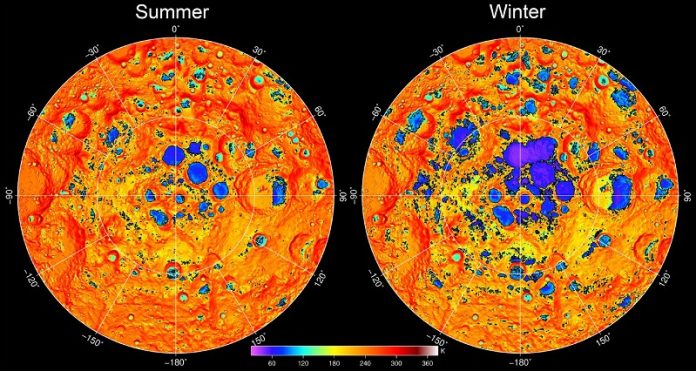
NASA’s Artemis mission will send the first woman and the first person of color to the Moon’s South Pole, marking humanity’s first return to the lunar surface in over 50 years.
As part of this historic mission, astronauts will experience several fascinating and unique phenomena.
Here are nine out-of-this-world experiences that await them.
1. A Hovering Sun and Giant Shadows
Near the Moon’s South Pole, the sun behaves very differently than on Earth. It hovers just a few degrees above the horizon, never rising or setting.
As a result, shadows on the Moon’s surface will be dramatically long—25 to 50 times longer than the objects casting them. Astronauts will see the sun move horizontally across the sky, creating an eerie, otherworldly light.
2. Sticky, Razor-Sharp Dust
The Moon’s surface is covered in a fine, powder-like material called lunar regolith. But despite its soft appearance, lunar dust is sharp and scratchy.
It’s formed by meteoroid impacts that melt and shatter rocks into tiny, jagged pieces. Since the Moon lacks wind and water to smooth out the particles, the dust remains sharp and poses a risk to astronauts and their equipment.
3. Electrically Charged Dust
In addition to being sharp, lunar dust is also charged with static electricity.
Without an atmosphere to protect it, the Moon’s surface is exposed to plasma and radiation from the sun, causing static electricity to build up.
This can short-circuit electronics and make dust stick to astronauts’ spacesuits, potentially entering their living quarters.
To prevent this, NASA has developed new materials and shields to keep the dust under control.
4. A New Sense of Lightness
The Moon’s gravity is about one-sixth of Earth’s, meaning that astronauts will feel much lighter as they move across the surface.
This reduced gravity will make simple tasks, like picking up a rock or swinging a hammer, feel very different.
In 1972, Apollo astronaut Charles Duke experienced this firsthand when he struggled to pick up a hammer he dropped.
Despite being lightweight, the hammer’s inertia made it tricky to handle. However, the lower gravity will also be a perk, as astronauts won’t feel as weighed down by their bulky spacesuits. Plus, bouncing across the lunar surface is simply fun!
5. A Waxing Crescent Earth
From the Moon’s South Pole, astronauts will have a breathtaking view of Earth. Just as we see different phases of the Moon from Earth, astronauts will witness shifting phases of Earth from the Moon.
These Earth phases occur opposite to lunar phases—so when Earth experiences a new moon, the Moon’s surface will see a full Earth glowing in the sky.
6. A Closer, Shorter Horizon
Because the Moon is smaller than Earth, the horizon will appear much closer to astronauts. On Earth, the horizon stretches about 3 miles away for someone standing on flat ground.
On the Moon, however, the horizon will be just 1.5 miles away, making the surroundings feel more confined and compact.
7. Extreme Temperatures
The Moon’s South Pole experiences some of the most extreme temperatures in the solar system.
Since sunlight skims the surface horizontally, it may never reach the bottom of some craters, which have remained in shadow for billions of years.
These dark, deep craters can be as cold as minus 334 degrees Fahrenheit, far colder than even the most frigid temperatures recorded on Earth. Meanwhile, areas in direct sunlight can become scorching, reaching up to 130 degrees Fahrenheit.
8. A Pitch-Black Sky
Unlike Earth, the Moon doesn’t have an atmosphere to scatter light, so the sky remains inky black even during the day.
Astronauts will experience a stark contrast between the bright lunar surface and the dark, starless sky above.
9. A Rugged Landscape
The terrain of the Moon’s South Pole is rugged and full of challenges. The landscape is marked by mountains, valleys, and millions of craters.
Navigating these gaping craters and long shadows will be difficult for the astronauts, but with specialized training and equipment, they’ll be prepared to handle the rough landscape.
As the Artemis astronauts explore the Moon’s South Pole, they’ll encounter these incredible phenomena, helping us better understand our nearest celestial neighbor and paving the way for future space exploration.



